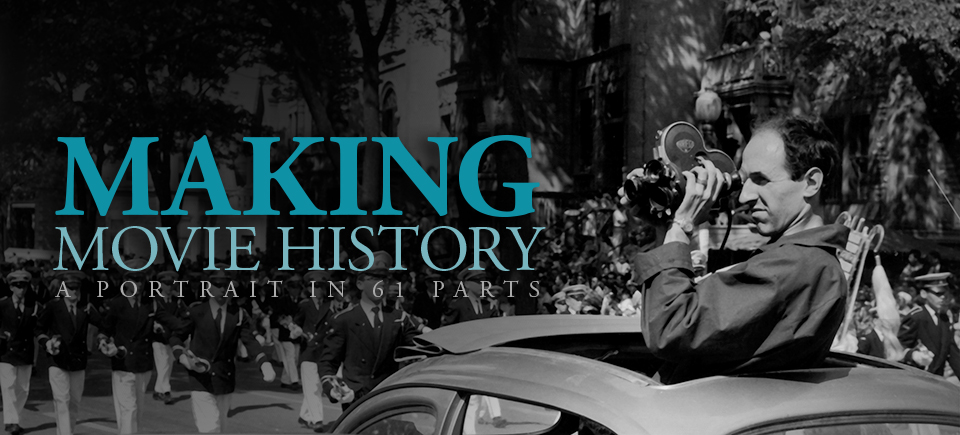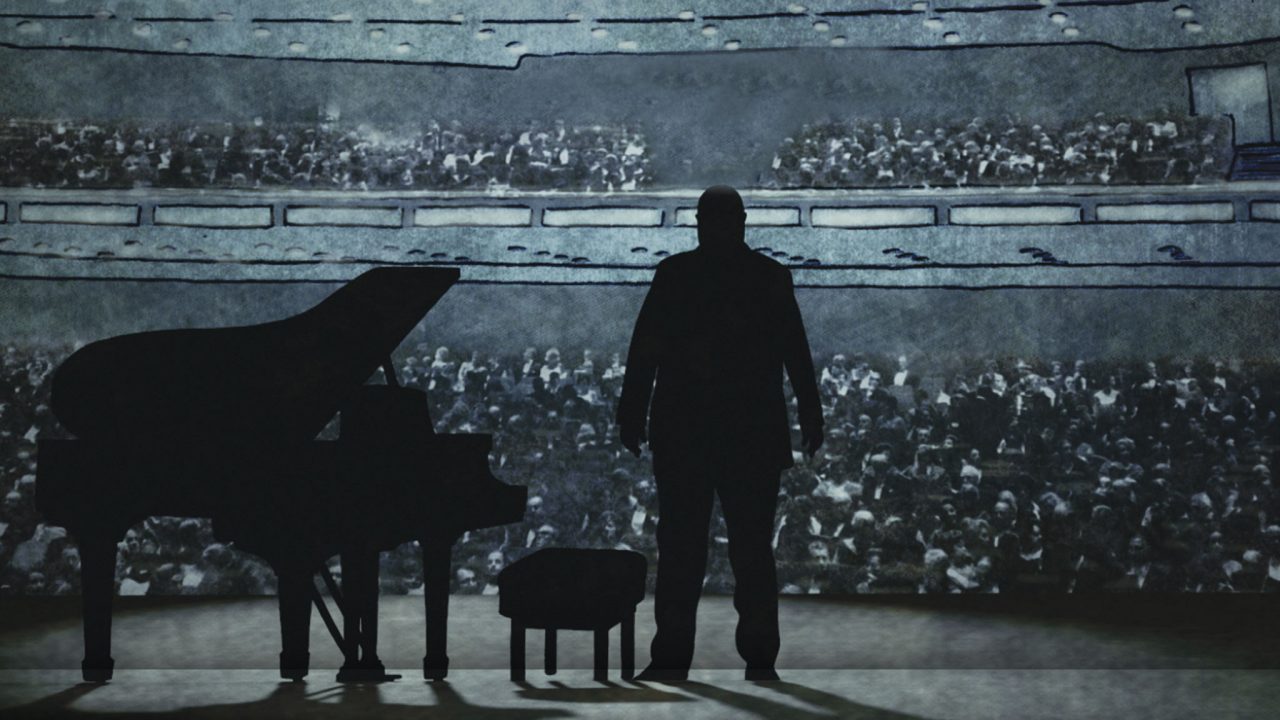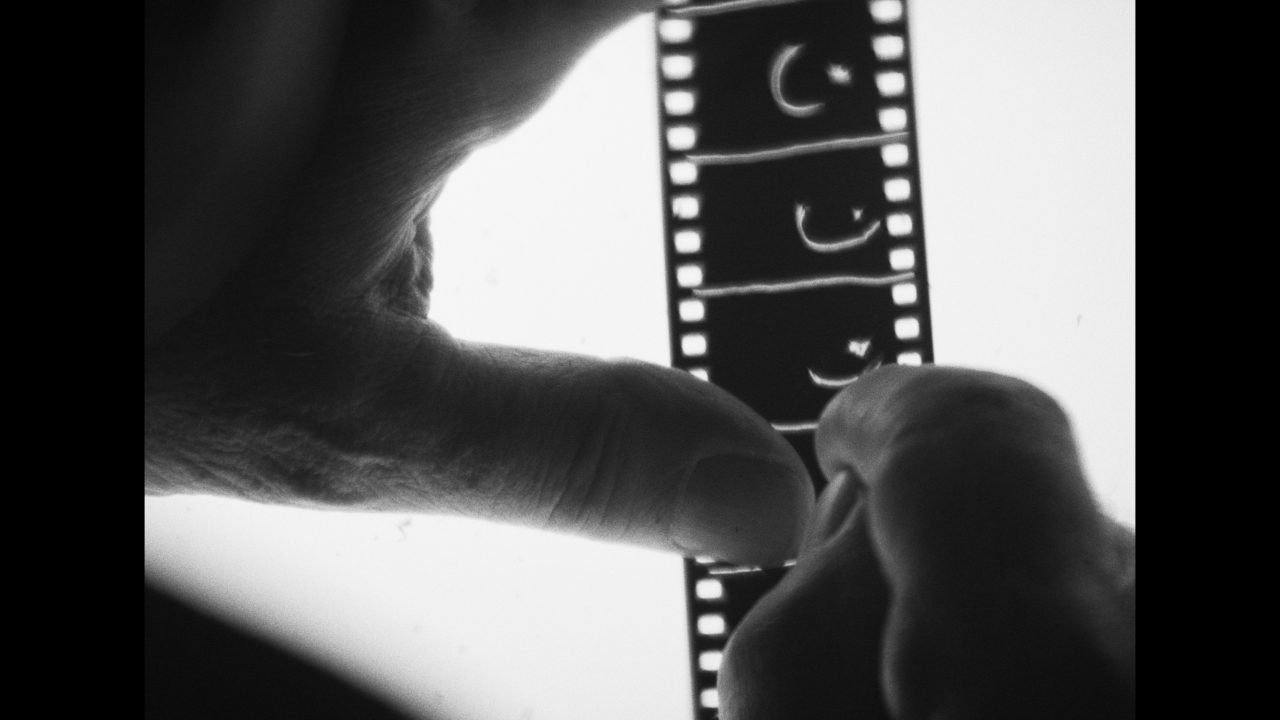
Explore “Making Movie History: A Portrait in 61 Parts”, a new web doc series
Explore “Making Movie History: A Portrait in 61 Parts”, a new web doc series
This is a guest post by Michelle van Beusekom, the Interim Director General of English-language production at the NFB, which releases approximately 45 works annually. Michelle was also part of the team that established the NFB’s first interactive production studio in 2009. She is a firm believer in the role and possibilities of public media, and has worked at the CBC and the Women’s Television Network prior to joining the NFB.
***
Film history—in video interviews!
Filmmaker and film historian Denys Desjardins has been documenting the history of Quebecois cinema for years. In 2010, he approached the NFB about creating a series of profiles of Quebec cinema giants from the NFB’s earlier years. In 2011, Joanne Robertson came on board to direct a series of complementary profiles from the English language side of the NFB. And so began the path towards Making Movie History: A Portrait in 61 Parts, an interactive project about the earlier years of the NFB that is launching on NFB.ca this week.
The project is made up of profiles of some of the artists, rebels and poets who found their creative home at the NFB. Working within a public mandate to “interpret Canada to Canadians and other nations”, these pioneers created the foundations for a distinctive Canadian cinematic tradition.
For me, producing the Making Movie History website and its English language profiles has been a fascinating immersion into the origins of the NFB and the evolution of cinema in this country.
Early Canadian filmmakers: learning on the job
We spoke with some of the people who started working at the NFB soon after its inception in 1939—people like Grant Munro, a young visual artist from Winnipeg who was recruited by celebrated animator Norman McLaren and started working at the NFB in 1942. Like the majority of early recruits, Munro had no film training whatsoever and learned his métier on the job. There was no film tradition to speak of in Canada at the time—just some government film production focused on promoting trade and tourism and a few fledgling independent production companies. A whole generation of filmmakers-to-be like Munro learned their craft at the NFB. A brilliant director, animator and actor who collaborated with McLaren on many films including the Oscar-winning Neighbours, Munro was one of the bright lights who has defined the animation tradition in Canada.
Making Movie History: Grant Munro, Joanne Robertson, provided by the National Film Board of Canada
The NFB’s female pioneers
We also dug deep into the archives, uncovering interviews with pioneers who are no longer alive including Evelyn Lambart, Canada’s first woman animator and co-director of six films with Norman McLaren and Evelyn Spice Cherry. Cherry was one of the few Canadians working at the NFB in the 1940s with any filmmaking experience. She was a journalist from Yorkton, Saskatchewan who, by chance, had met NFB founding commissioner John Grierson’s sister. That led to a meeting with Grierson in London where he was heading up the General Post Office Film Unit—a hub of documentary production that put out some of the finest documentary work in the world in the 1930s.
Cherry started as a secretary but quickly demonstrated her creative chops and became a director. Norman McLaren, recruited to the GPO by Grierson, apprenticed under her as an editor. Cherry won widespread acclaim for her 1934 documentary Weather Forecast and Grierson invited her to join his staff at the NFB where she became co-head of the NFB’s Agricultural Unit with her husband Lawrence Cherry. They directed and produced dozens of films on the challenges facing rural Canadians. Evelyn Spice Cherry left the NFB early, essentially forced out in 1950 when the NFB was staring down accusations of harbouring communist sympathizers.
Making Movie History: Evelyn Spice Cherry, Joanne Robertson, provided by the National Film Board of Canada
For me, one of the many high points of working on the Making Movie History project has been “discovering” that there was a whole generation of women filmmakers working at the Board from the very beginning. People often think that women’s filmmaking in Canada begins in the ‘60s and ‘70s with Anne Claire Poirier, Monique Fortier, Kathleen Shannon and Studio D. But there was a whole generation of women directing films at the NFB in the 1940s—women like Jane Marsh, the only woman to direct war films at the NFB, a fiery personality who left over key creative differences with Grierson related to the production of the newsreel series Canada Carries On.
Making Movie History: Wartime Women, Joanne Robertson, provided by the National Film Board of Canada
And there was Gudrun Bjerring Parker, a young reporter who Grierson hired away from the Winnipeg Free Press. With no filmmaking experience, Gudrun started as an editing assistant but was soon directing films. Before They Are Six is a fascinating look at the daycare centres that started to spring up during the war as more and more women took on work outside of the home. The film includes a scene of a woman tying her toddler to the front fence as she heads out to work. Gudrun confirms in her interview that such things did happen before daycares were introduced.
In 1945, Gudrun directed an all-but-forgotten film called Listen to the Prairies (not on NFB.ca yet, but coming very soon) which was heralded by influential Unit B producer Tom Daly as a landmark film signaling a break from the British didactic documentary tradition and the start of a new style/rhythm of filmmaking that was truly Canadian; the film was a precursor to seminal films like Corral and Paul Tomkowicz: Street-railway Switchman. Other women directing films at the NFB in the early 1940s include Beth Zinkan and the American anthropologist Laura Boulton. Besides directing their own films, Judith Crawley and Margaret Perry were the first two women cinematographers working at the NFB.
Making Movie History: Gudrun Bjerring Parker, Joanne Robertson, provided by the National Film Board of Canada
Discovering behind-the-scenes details
Everyone who participated in the Making Movie History project had fascinating stories to tell, but one that really stood out for me was William Weintraub’s account of how documentaries were made in the days before lightweight cameras and portable sound recording equipment. Bill was a documentary script writer in the 1950s; he was interviewing a travelling salesman one day and a lion tamer the next. Equipment in those days was so heavy and the process of capturing image and sound so laborious that there was no room for improvisation. So as a writer, Bill’s role was to pre-interview documentary subjects. Then he would write a script based on their words and the people would be asked to deliver these lines back to the camera!
It was also fascinating to learn about the evolution of musical scoring. In the 1940s, the NFB quickly established a music department and recruited a host of enormously talented young composers such as Maurice Blackburn, Louis Applebaum and Eldon Rathburn. The soundscape for Making Movie History is comprised of five tracks originally composed for Jean Claude Labrecque’s classic 1964 film 60 Cycles—a small homage to the thousands of brilliant original scores created over the years for NFB films.
Making Movie History: The Composers, Joanne Robertson, provided by the National Film Board of Canada
All in all, between the NFB’s French and English production teams, we produced 61 profiles for Making Movie History. They’ve been organized into playlitsts within 13 thematic categories which viewers can explore along with thematic texts, short bios and filmographies that link to titles available for viewing on NFB.ca.
Who are we? Where are we heading?
The point of this project wasn’t to get all nostalgic about the past but rather to better understand where we come from and what that tells us about who we are and where we’re heading. The fact that Canadian cinema was developed within the public sphere has had a huge impact on the character of filmmaking in this country. Generations of filmmakers learned their craft believing what they did was public service. It was never a matter of art for art’s sake (in fact, when a budding filmmakers’ ego would get out of check, Grierson was wont to remind them: “you’re not here for your sweet blue eyes”). It was also not a matter of telling stories that would sell eyeballs to advertisers.
The NFB was making films in the public interest, films that were for audiences and would be of service to people. Because so many of the first generations of Canadian filmmakers learned their craft at the NFB, this has had an enormous impact to this day on the stories we tell, how we tell them and how we view the role of cinema and its social purpose.




Cannot find myself!
Hi Terry,
Your profile is featured in the “Direct Cinema” section of “Making Movie History”. When the site launches, click on the word “Begin” underneath the descriptive text. This will take you to all of the categories in black-and-white boxes. When you hover your mouse (don’t click, simply hover without clicking) the title of each box will appear. Find the “Direct Cinema” box (it should be in the top right-hand corner of the grid) and click here. Once in “Direct Cinema”, you’ll see a “Playlist” on the bottom left-hand side of the screen. Your video is the first in the playlist (click on your picture and the video will automatically play).
If you have any more trouble finding your video, feel free to call my office at 514-496-4394 and I would be glad to assist you.
Best wishes,
Jovana
Terry, you can also select “All Portraits” from the bottom left-hand menu on the page and you will see an alphabetical list of all featured interviews.
What a moving and fascinating project. I have learned so much already by reading this blog and watching the films within it. I had always known that Canada – through the NFB – had a great filmmaking history but here one begins to really appreciate that .What really struck me in the history was the strong notion of service – that films were to be of service to the public and community. I love that . I hope we can keep that alive.
Congratulations to the team on creating this wonderful project and thank you to the great filmmakers who are profiled .
What about Why Shoot the Teacher?
Can’t find myself on thie programme! Rex Tasker
Hi Rex,
Your profile is featured in the “Coast to Coast” section of “Making Movie History”. When the site launches, click on the word “Begin” underneath the descriptive text. This will take you to all of the categories in black-and-white boxes. When you hover your mouse (don’t click, simply hover without clicking) the title of each box will appear. Find the “Coast to Coast” box (it should be in the bottom, left-hand corner of the grid) and click here. Once in “Coast to Coast”, you’ll see a “Playlist” on the bottom left-hand side of the screen. Your video is the first in the playlist (click on your picture and the video will automatically play). If you have any more trouble finding your video, feel free to call my office at 514-496-4394 and I would be glad to assist you.
Thanks,
Jovana
Rex, you can also select “All Portraits” from the bottom left-hand menu on the page and you will see an alphabetical list of all featured interviews.